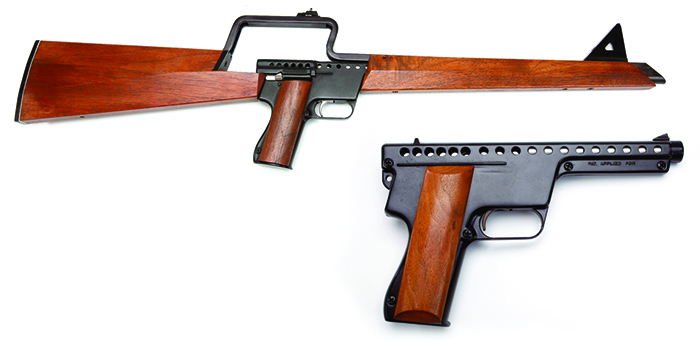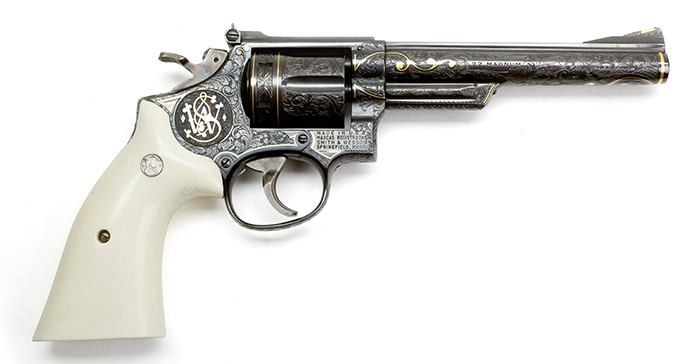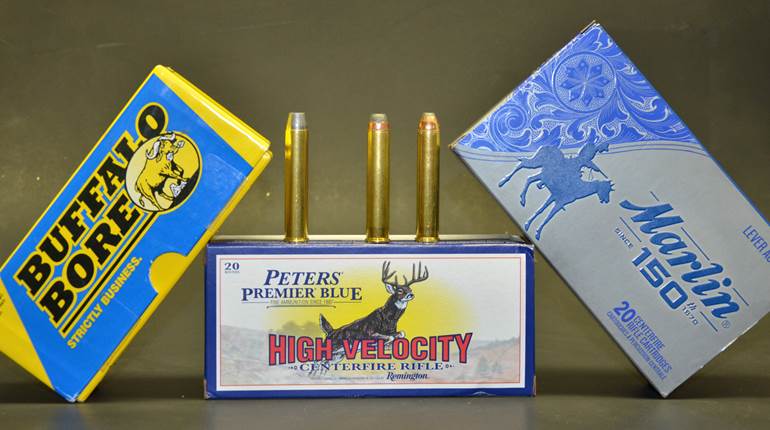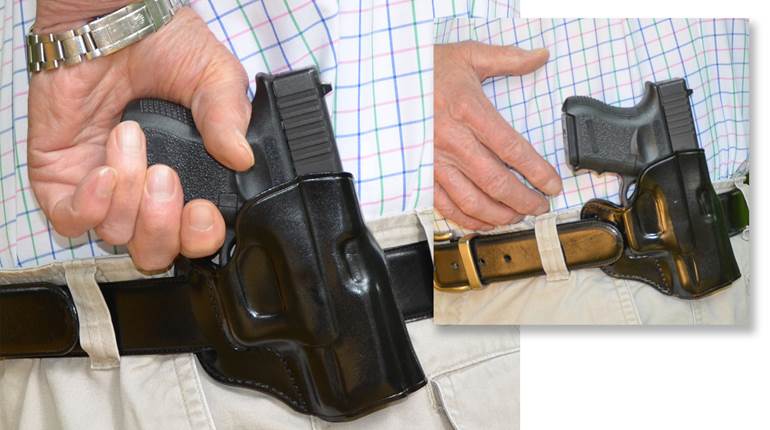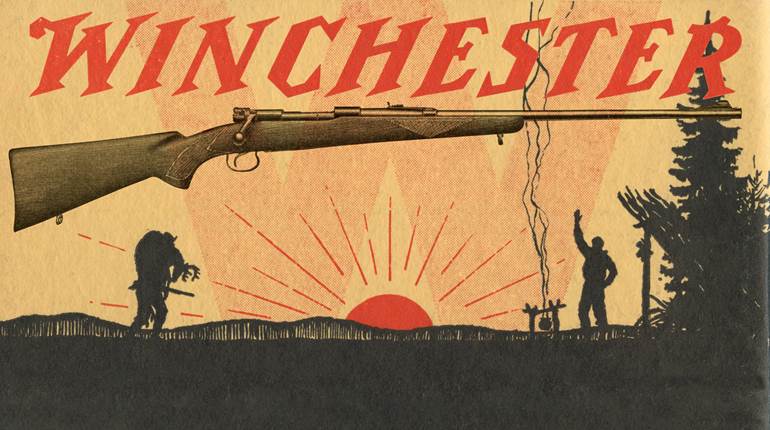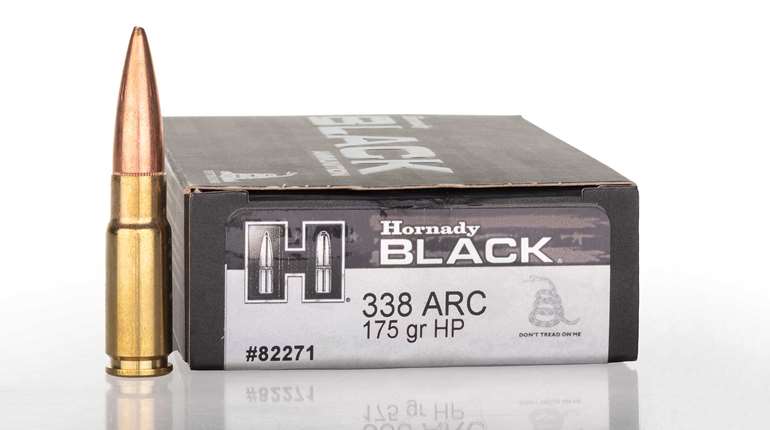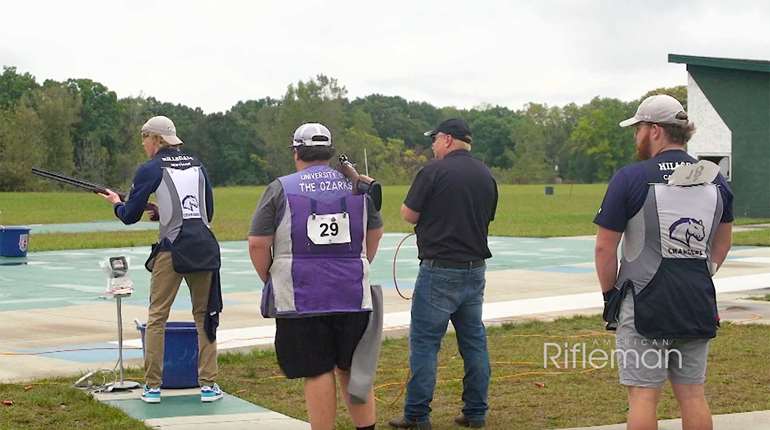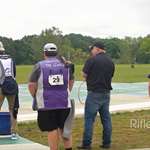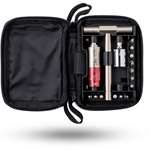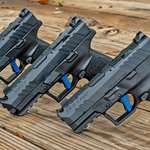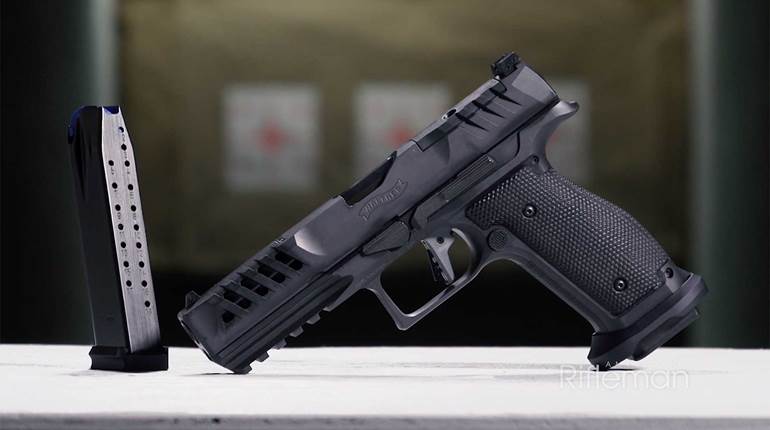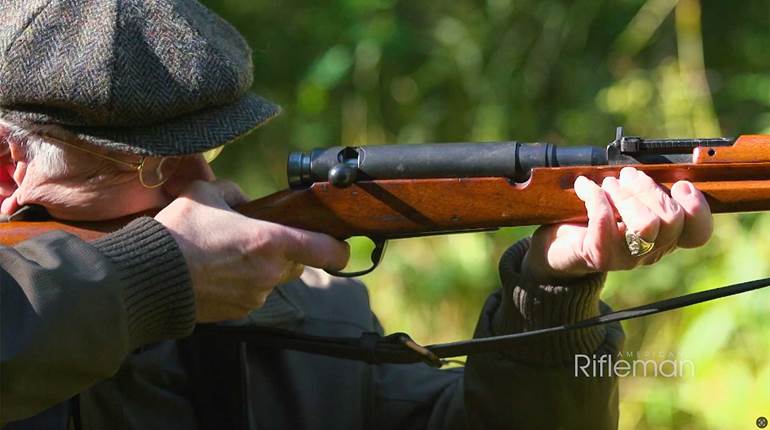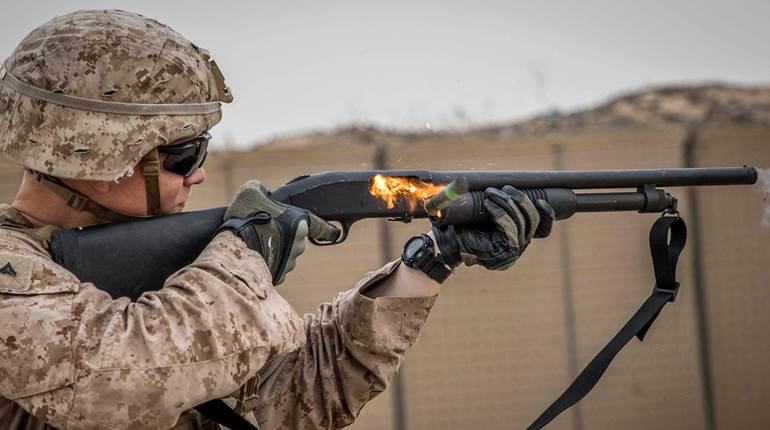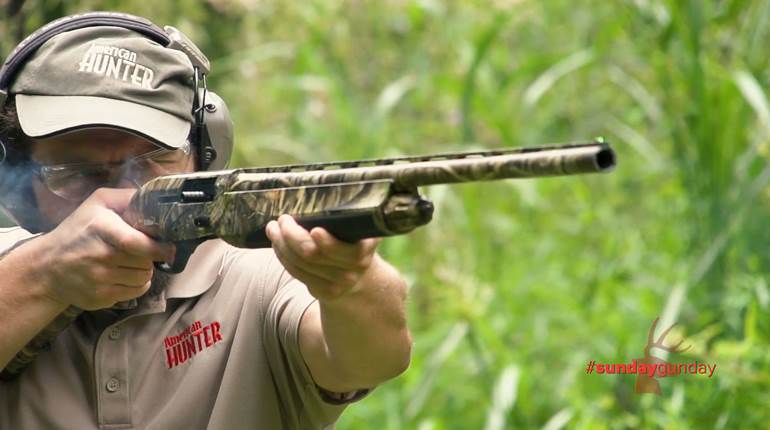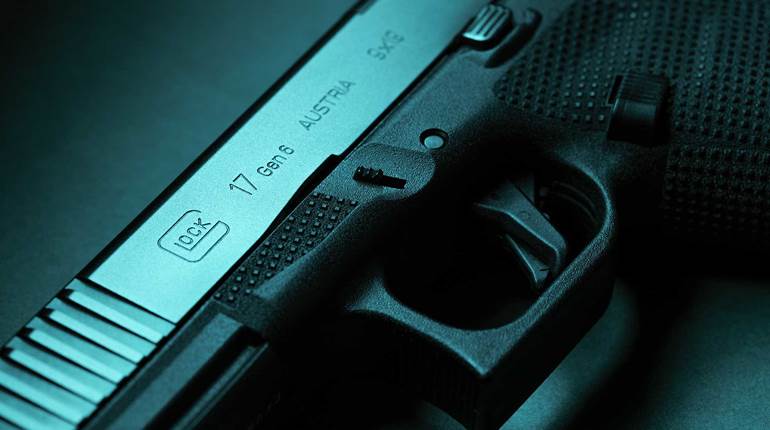
From Gyrojets that fired miniature rockets to a hunting rifle with an on-board computer, many seemingly harebrained ideas have actually made it into the firearm marketplace. But those revisited here didn’t get far before they were scuttled due to lack of consumer demand. What? Your gun doesn’t fire Trounds? Read on.
Many firearm enthusiasts know the Model 1917 Browning Automatic Rifle was the first gas-operated rifle to be adopted by the U.S. Government. Few are aware of an earlier rifle with an action of the same type designed for sporting use. Patented in 1906 by Morris F. Smith and manufactured by Standard Arms Co. of Wilmington, Del., it was called the Model G and was offered in the then-new Remington family of rimless cartridges in .25, .30, .32 and .35 calibers. A port near the end of the barrel channels propellant gas through a valve into a long cylinder, which was often mistaken by those not familiar with the rifle as a magazine tube. A piston inside the cylinder is connected to dual action bars which in turn are connected to the breech bolt. Turning the valve to its “off” position prevents gas from entering the cylinder, allowing the rifle to be manually operated as a slide action.
One can only speculate on why its inventor chose to give his rifle the capability of both semi-automatic and manual operation. Smokeless propellants had been in common use for only a short time, and a possible reason was the lack of uniformity in factory ammunition available at the time. The two Model G rifles in .25 and .35 Rem. I have owned operated reliably with handloads loaded to maximum pressures, but a reduction in velocity of 100 to 150 f.p.s. caused both to malfunction. The velocity of ammunition exposed to extremely cold weather during an early 1900s hunt could easily have been lowered by that much. Adding to the rifle’s problems, propellant fouling buildup in the gas cylinder eventually leads to malfunctions. Poor maintenance may have also contributed to a reputation for unreliability.
The Model G has a top-ejecting action and an internal box magazine of five-round capacity. Cartridges are loaded through a hinged floorplate at the bottom of the receiver. Like other hunting rifles of the day, it easily takes down into two shorter pieces. A two-position safety lever is located inside the trigger guard. Machine work on the interior and exterior of the action is remarkably good given the tool and machining techniques of the time. The rear sight elevator, buttplate and slide handle are ornate brass castings.
Why the Model G failed to win the hearts of America’s deer hunters is easy to understand. Its competition, the recoil-operated Remington Model 8 and the blowback-operated Winchester Model 1907 were not as ammunition-sensitive and required less-frequent cleanings. A second variation called the Model M did not have the gas system and was capable only of manual operation. It had to compete with Remington’s Model 14 pump-action and, since I own one of those as well, it is easy for me to understand why hunters chose it over the Standard Arms rifle.
MBA Gyrojet Pistol and Rifle
Despite being promoted by its manufacturer, MB Associates of San Ramon, Calif., as the firearm of the future, the Gyrojet’s time in the limelight proved to be nothing more than a dim flash in the pan. Rather than firing ammunition of conventional design, it used a rocket. Various diameters were said to be in the works but 13 mm received the most publicity, and it is the one I actually shot.
The round-nosed body of the rocket was hollow and made of drawn steel. At first glance it looked like an oversized .45 ACP cartridge. During assembly, a propellant charge was inserted into the body of the rocket and its rear end closed off by pressing into place what was described as a nozzle plate. At the center of the plate was a conventional pistol primer and positioned around it were several small vents. The barrel of the pistol had no rifling so the vents were angled to cause the rocket to rotate about its axis as propellant gas flowed through them during firing.
Rifles, carbines and pistols were built, all appearing to have been constructed from a toy erector set like I received at Christmas as a kid. The pistol was about the size of a Colt M1911 and weighed around 25 ounces. Rounds fed from a magazine inside the grip. The rear-facing, internal hammer was positioned at the bottom of the receiver just above its trigger and, when the trigger was pulled, the hammer traveled to the rear to strike the nose of the rocket. This drove its primer against a fixed firing pin, thereby igniting the propellant charge. Forward movement of the rocket cocked the hammer, readying the gun for the next shot.
Whereas a bullet fired from a cartridge of conventional design reaches its peak velocity inside the barrel, the rocket traveled through the barrel rather slowly and did not reach top velocity until fuel burnout at about 20 yards. This and poor accuracy are but two of several reasons why it failed to pass either military or civilian acceptance. On the positive side, manufacturing cost of the “throwaway launcher” was said to be less than a dollar, recoil was quite low and the report was more of a mild “whoosh” than a harsh “bang.” Those and a high “wow” factor for the 1960s was about all the Gyrojet system had going for it.
The first successful attempt by an American at making ammunition with the propellant attached to the base of the bullet rather than enclosed by some type of case was the Rocket Ball patented by Walter Hunt in 1848. Variations of the idea later appeared from others, but the first one I shot was introduced in 1969 by Daisy/Heddon. Basically a piston-driven air rifle designed to handle caseless ammunition, it was called the V/L in honor of its Belgian inventor, Jules Van Langenhoven. The ammunition consisted of a small propellant charge attached to the base of a 29-grain, 0.224-inch diameter lead bullet. Its muzzle velocity was 1150 f.p.s.
Pulling a long lever housed in a slot at the bottom of the fore-end of the rifle compressed its spring and retracted the gas piston and cylinder, thereby exposing the chamber of the barrel. After a round was single-loaded directly into the chamber, pushing the lever moved the cylinder forward to seal off the breech end of the barrel while the piston was held back by the sear. Pulling the trigger allowed the piston to move forward, and the rapid compression of air increased its temperature to about 2,000 degrees. As the required level of pressure inside the cylinder was reached, a check valve at the front of the cylinder opened, allowing the super-heated air to enter the chamber and ignite the propellant.
There were a few shortcomings. Removing a round from the chamber required either firing it or opening the action, inserting a cleaning rod into the muzzle of the barrel and pushing it out. The ammunition duplicated the performance of the high-velocity .22 Rimfire Short, yet it cost more than the more popular .22 Long Rifle. At $29, the standard-grade rifle with its plastic stock was considerably more expensive than single-shot .22 rimfires from other companies and more than some repeaters. The Daisy/Heddon creation was interesting but, as sales would eventually prove, it had more things going against it than for it.
Smith & Wesson Model 53
During the mid-1950s, Jim Harvey of Lakeville Arms began converting Smith & Wesson K22 revolvers for a wildcat cartridge called the .224 Kay-Chuk. The case was made by shortening the .22 Hornet case by 0.050 inches and fire-forming to minimum body taper and a sharp shoulder angle. It was commonly believed that Harvey’s conversion inspired S&W to introduce its Model 53 revolver in .22 Centerfire Magnum in 1961. The case was formed by necking down the .357 Mag. case for an 0.222-inch jacketed bullet weighing 40 grains. A Remington development, it was often referred to as the .22 Remington Jet.
The Model 53 was offered with 4-, 6- and 83⁄8-inch barrels and priced at $95. A pivoting striker in its hammer along with dual firing pins in the frame gave it the capability of handling both rimfire and center-fire cartridges; aluminum chamber inserts included with the gun allowed the use of .22 Short, .22 Long and .22 Long Rifle ammunition. Even better was an optional second cylinder in .22 Rimfire for an additional $21.90.
Advertised muzzle velocity of the .22 Jet was 2460 f.p.s. from a 83⁄8-inch barrel but it fell short of that in revolvers. My Model 53 had a 6-inch barrel, and the highest velocity I recorded with factory ammunition or a handload consisting of 12.0 grains of Hercules 2400 behind the Hornady 40-grain bullet was 1875 f.p.s. Muzzle velocity in an 183⁄8-inch barrel was around 2200 f.p.s. Failing to live up to its velocity billing may have been somewhat damaging, but poor case design proved to be a deadly stake through the heart of an otherwise fine revolver. Rather than following Jim Harvey’s lead of minimum body taper, Remington and Smith & Wesson went in the opposite direction by giving the .22 Jet case extreme body taper. It never presented a problem to those of us who made sure no resizing lube remained on the cases of handloads and all trace of oil was removed from the chambers prior to firing (cigarette lighter fluid worked fine). Less aware Model 53 owners experienced cases setting back in chambers hard enough to prevent cylinder rotation.
Soon after the introduction of the .22 Jet, Dan Cotterman blew out the case to minimum body taper, gave it a sharp shoulder and called it .22 Super Jet. Would the Model 53 have remained in production longer if it had been chambered for that cartridge or one similar to it? Your guess is as good as mine.
Dardick Series 1500 Pistol and Carbine
The Dardick pistol was available commercially from 1954 to 1962. It was also tested rather extensively by the U.S. Army for possible use in rifles and machine guns. Patented by David Dardick, it was initially chambered for the .38 Dardick Special and best described as a 15-round, magazine-fed, double-action revolver designed to use a triangular-shaped cartridge called a Tround. The case was made of a special plastic and, since the three chambers of the enclosed cylinder had open sides for cartridge feeding and case ejection, it had to be strong enough to contain the pressure of firing.
Pulling the trigger brings an external hammer to its cocked position. As the cylinder revolves, one chamber positions a loaded round beneath the hammer, the second cylinder dumps the spent case of a previously fired round from the gun and the third cylinder picks up a fresh cartridge from a magazine located in the grip of the gun.
The Dardick Series 1500 pistol was introduced at a price of $99.50 and came with interchangeable .38- and .22-cal. barrels. The extra barrel and chamber inserts included with the gun along with a selector on its hammer enabled it to also use .22 Rimfire ammunition. Adaptors that allowed 9 mm Luger and .38 S&W to be used with the .38-cal. barrel were also announced. A carbine conversion unit with shoulder stock was also available. If ever there was a firearm design answer to a question asked by no one, the Dardick was it.
Built on a modified version of the Model 700 action, the EtronX was born in 2000 and died quietly soon thereafter. In lieu of a spring-powered firing pin, its bolt contains a ceramic-coated, metal electrode that makes contact with the special primer of a chambered round when the bolt is closed. The safety is a two-position switch, and, when turned on, it closes a circuit, allowing electrical current to flow from a 9-volt battery stowed in the buttstock to the trigger. The trigger serves as a secondary switch and pulling it completes the circuit, allowing the current to reach the electrode, thereby igniting the priming compound.
The buttstock houses a computer sealed inside a waterproof container. A red indicator light located at the top of the grip communicates the status of the rifle to its shooter. With the safety switch pushed to its “fire” position and a round in the chamber, the light burns steadily. The light goes off when the round is fired. If all is well with the system, the light comes back on with the chambering of the next round. Depending on ambient temperature, an alkaline battery lasts from 1,500 to 2,000 firings with a single flash of the red light indicating only about 100 left. Two flashes indicate the battery is too weak to fire the rifle. Four flashes indicate the rifle did not fire because the trigger was being held back as the safety was being disengaged. Five flashes tells the owner he should stop trying to install a new battery while the main switch is on “Enabled” and the safety on “Fire.” Simple, right? The entire system was deactivated by turning a key-operated switch at the bottom of the grip. To say the EtronX is as idiot-proof as the human mind and hands could possibly make it is rather an understatement.
Even though the EtronX uses a special primer, it was designed to be used in regular cases. Both ammunition and primers for reloading were available. I shot four different lots of .22-250 Rem. ammunition, all loaded with the 50-grain V-Max bullet, and accuracy for five-shot groups averaged from 0.95 inches to 1.46 inches. Average muzzle velocity ranged from 3654 to 3751 f.p.s. My most accurate handload, 37.0 grains of Norma 202 and the Shilen 52-grain bullet in Federal cases averaged 0.53 inches and 3672 f.p.s.
The intent was to virtually eliminate locktime in a bolt-action rifle, and they came darned close to doing it. Still, the end result is not much better than using a 2-ounce trigger of conventional design in a short-action such as the Remington 40X. The EtronX cost about twice as much as a Model 700 BDL and yet was no more accurate-and that hurt its chances of survival a lot. So did the cost of ammo. I don’t recall its price but do remember that primers were about five times more expensive than regular primers. On top of it all, relying on a battery for firing a hunting rifle made no small number of hunters uneasy. The EtronX seemed like a great idea but it turned out to be one Remington officials probably wish they could forget.
Fabricating a barrel by wrapping a steel liner with modern fibers is old hat today, but it was a revolutionary idea when Winchester introduced its Model 59 shotgun in 1959 at a price of $149.95. Like the action of the earlier Model 50, it was recoil-operated by the floating-chamber method, the design of which is credited to David Williams of M1 Carbine fame. To quote Winchester advertisements, “The Win-Lite barrel is made by wrapping 500 miles of glass fibers around a steel liner with a thickness of .020 inch.” The fibers were then heat-fused to the steel liner and given a blued surface coloration. The result was a shotgun weighing only 61/2 pounds compared to 81/4 pounds for Winchester’s Model 50.
But the concept was about more than a reduction in weight. When excessive pressure ruptures a shotgun barrel of conventional design near its chamber, fragmentation can send chunks of metal flying dangerously in all directions. During factory destruction tests the Win-Lite barrel split lengthwise and, in doing so, released pressure more gradually. Metal fragmentation was not entirely eliminated but what little remained was contained by the fiberglass wrap. The Versalite choke system became available on the Model 59 in 1961, making it the first shotgun of American design to have interchangeable, screw-in chokes.
The Model 59 was offered only in 12 gauge but a few test guns in 20 gauge were built. Several were also chambered for an experimental 14-gauge shell with an aluminum hull, and it performed quite satisfactorily on pheasant and other birds at Winchester’s Nilo Farms.
We can only speculate on why the Model 59 was discontinued in 1967 with only 82,000 built. Perhaps some hunters did not like the looks of its oversized barrel diameter. Others may have been turned off by the aluminum receiver. Its light weight definitely made the gun uncomfortable to shoot with the heavy loads many American hunters have long preferred. More likely it had to do with handling qualities. The Model 59 was a dynamic performer on flushing birds and remains one of the all-time great shotguns for plucking a ruffed grouse from the air, but too little weight up front left something to be desired when taking passing shots at doves. Like some of the other hunters who tried the Model 59, I found it to be a fantastic pointer but a poor swinger. Even so, I wish I had kept mine.

